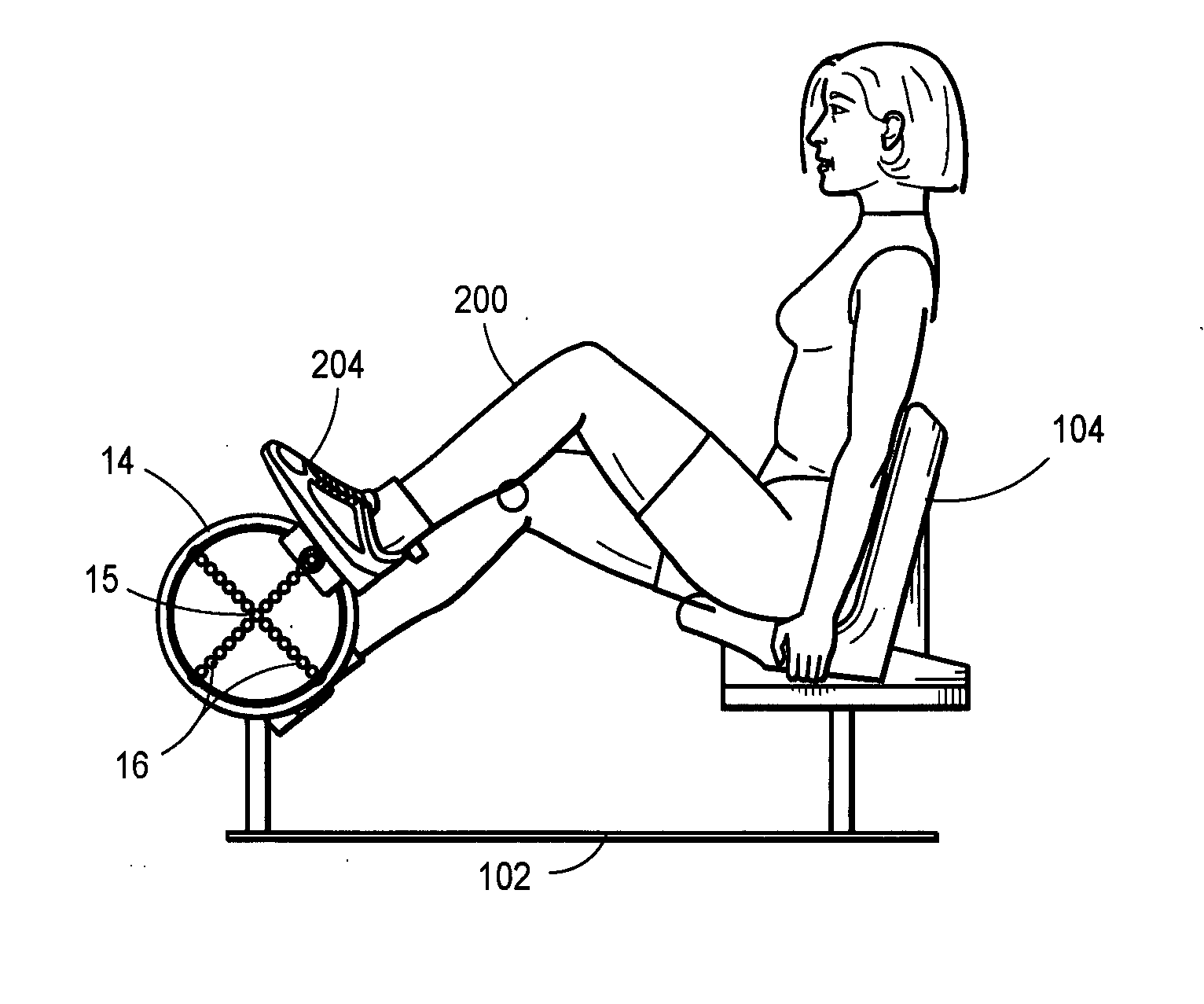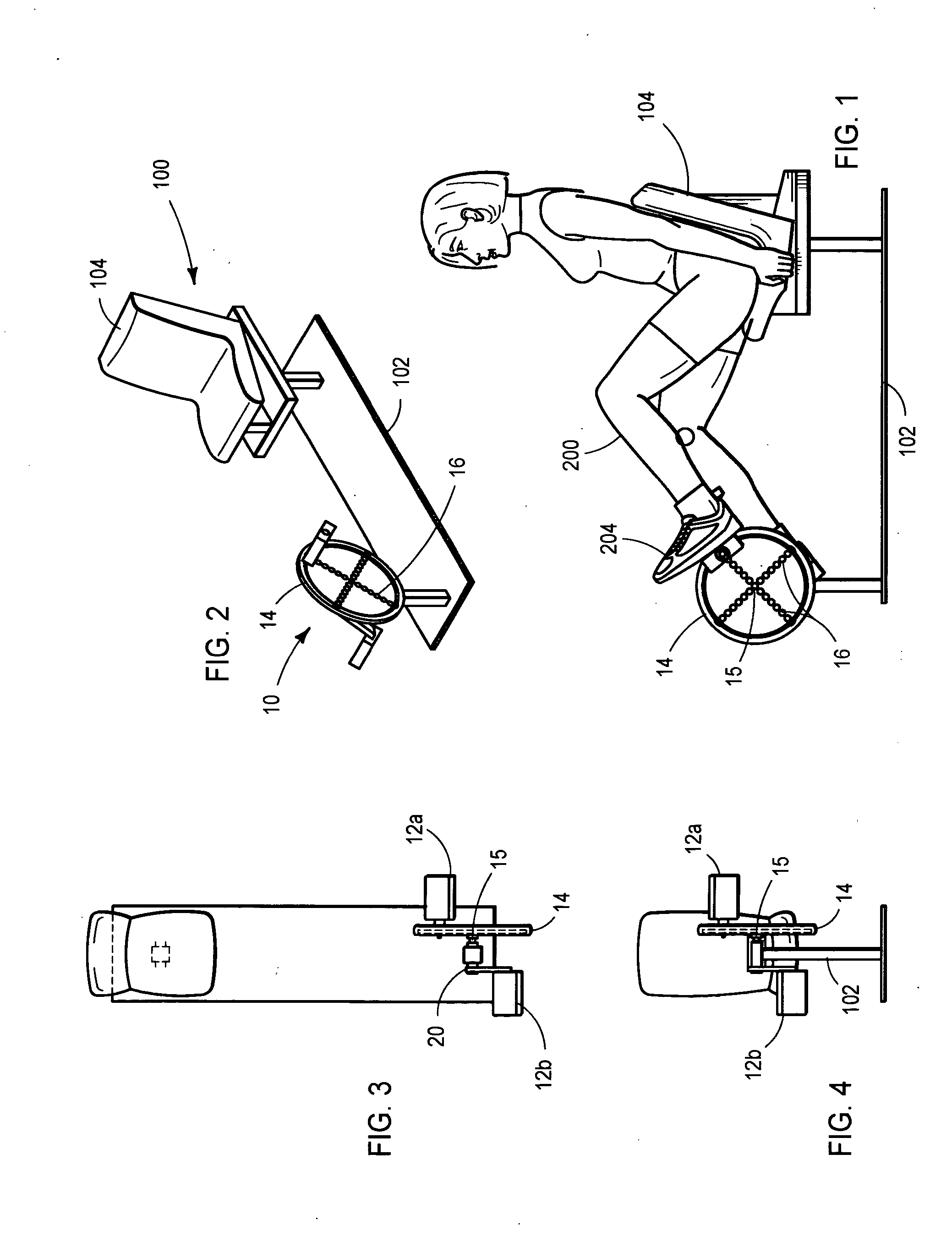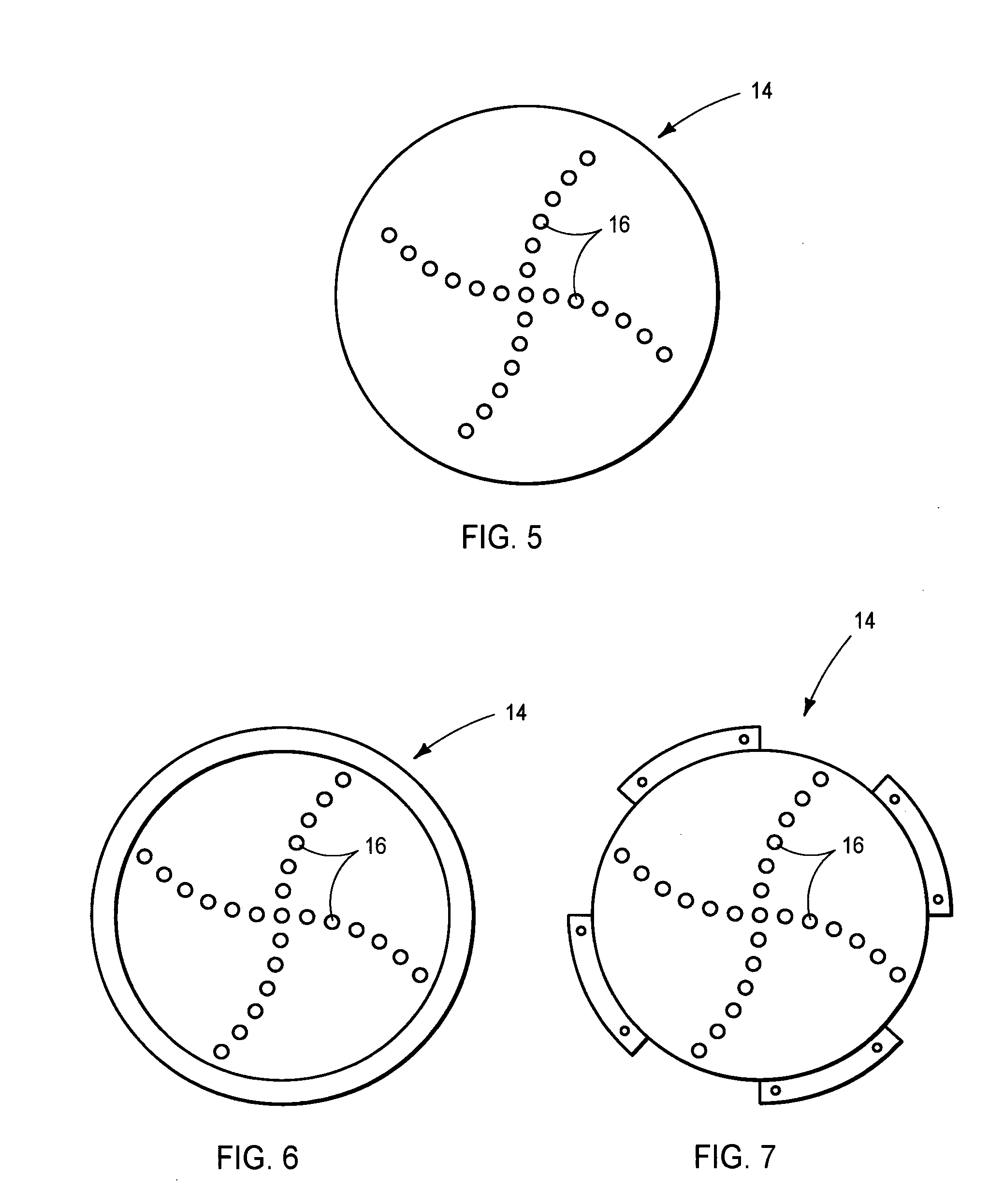Rotary rehabilitation apparatus and method
a rehabilitation apparatus and rotary technology, applied in the field of exercise and rehabilitation, can solve the problems of reducing the range of motion of one individual extremity, reducing the time required to recover, and affecting the recovery of the shoulder joint, so as to reduce the time required for recovery and increase the improvement of measurable outcomes. , the effect of increasing strength and flexibility
- Summary
- Abstract
- Description
- Claims
- Application Information
AI Technical Summary
Benefits of technology
Problems solved by technology
Method used
Image
Examples
Embodiment Construction
[0051] One rotary rehabilitation apparatus 10 providing for the selection of a range of motion for one or both legs 200 of a person is shown in FIGS. 1-4. An embodiment of the rotary rehabilitation apparatus for rehabilitating a person's upper extremities will be discussed in detail below. The rotary rehabilitation apparatus 10 is shown incorporated in a cycle-type exercise machine 100 having a support 102 upon which the apparatus 10 is rotatably mounted and a seat 104 positioned at a distance from the support 102. In this arrangement, the person can sit in the seat 104, place their feet 204 on the levers 12a and 12b and impart a pushing force thereto with their legs 200 to rotate a flywheel 14 at a center point 15 thereof around an axis extending in the horizontal plane.
[0052] The adjustable range of motion for each leg 200 is achieved by having the movable lever 12a be repositionable along one or more diameters of the flywheel 14. The flywheel 14 has a series of bores 16 extendin...
PUM
 Login to View More
Login to View More Abstract
Description
Claims
Application Information
 Login to View More
Login to View More - R&D
- Intellectual Property
- Life Sciences
- Materials
- Tech Scout
- Unparalleled Data Quality
- Higher Quality Content
- 60% Fewer Hallucinations
Browse by: Latest US Patents, China's latest patents, Technical Efficacy Thesaurus, Application Domain, Technology Topic, Popular Technical Reports.
© 2025 PatSnap. All rights reserved.Legal|Privacy policy|Modern Slavery Act Transparency Statement|Sitemap|About US| Contact US: help@patsnap.com



